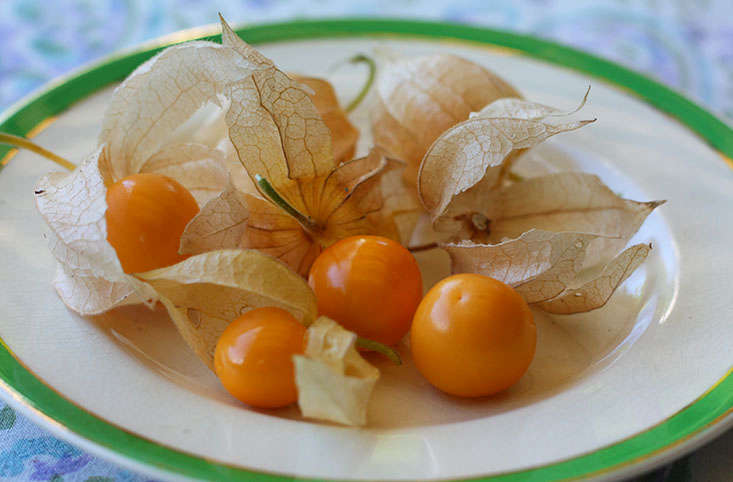Cup-and-Saucer Vine, Cobaea scandens
“An interesting and unusual plant which should find a place is Cobaea scandens, which sounds more attractive under its English name of cups-and-saucers,” wrote the virtuoso English gardener Vita Sackville-West, who grew the vine in her Sissinghurst Castle garden.
When Vita Sackville-West recommends a plant, I listen. This perennial climbing vine has flowers shaped like tea cups (which “sit” in more petals shaped like saucers) is a warm-weather plant that hails, originally from Mexico. In colder climates, consider it an annual but don’t worry—it can easily 10 feet in a single season.
Is cup-and-saucer vine a good choice for your garden? Read on to learn more:

Flowers change color as they bloom. When they open, cup-and-saucer flowers are “a creamy white; then they turn apple-green, then they develop a slight mauve blush, and end up a deep purple,” wrote Sackville-West.
Except for the ones that don’t. C. scandens ‘Alba’ is a white-flowering cultivar.

“The ideal place for it is a trellis nailed against a wall, or a position at the foot of a hedge, when people will be much puzzled as to what kind of a hedge this can be, bearing such curious short-stemmed flowers, like a Canterbury bell with tendrils,” she wrote.

Before you plant cup-and-saucer vine, do some research. C. scandens can become invasive in some regions (and by the way is not welcome in New Zealand). In that habit, it resembles another purple climbing vine, morning glory.

Cheat Sheet
- Grow cup-and-saucer vine as a cloak on an ugly chain link fence, or on a trellis to frame a doorway.
- Start training a vine when it is young and malleable. Wherever you pinch off a stem, expect lateral offshoots.
- Plants with grassy textures make good visual companions for cup-and-saucer vine. Ground covers such as lilyturf (Liriope) and feathery ornamental grasses such as graceful maiden grass (Miscanthus) are good choices.

Keep It Alive
- A warm-weather plant, C. scandens is winter-hardy only in USDA growing zones 9 to 11.
- Plant cup-and-saucer vine in full sun, in a site with well-drained soil.
- Easy to start from seed, cup-and-saucer vines can be started indoors and transplanted to the garden after the last frost date.
See more growing tips in Cup-and-Saucer Vine: A Field Guide to Planting, Care & Design in our curated guides to Vines & Climbers 101. Read more about how to use flowering vines in a landscape:
- 9 Ways to Create Curb Appeal with Flowering Vines and Climbers
- Passionflower: A Field Guide to Planting, Care & Design
- Everything You Need to Know About Houseplant Vines









Have a Question or Comment About This Post?
Join the conversation